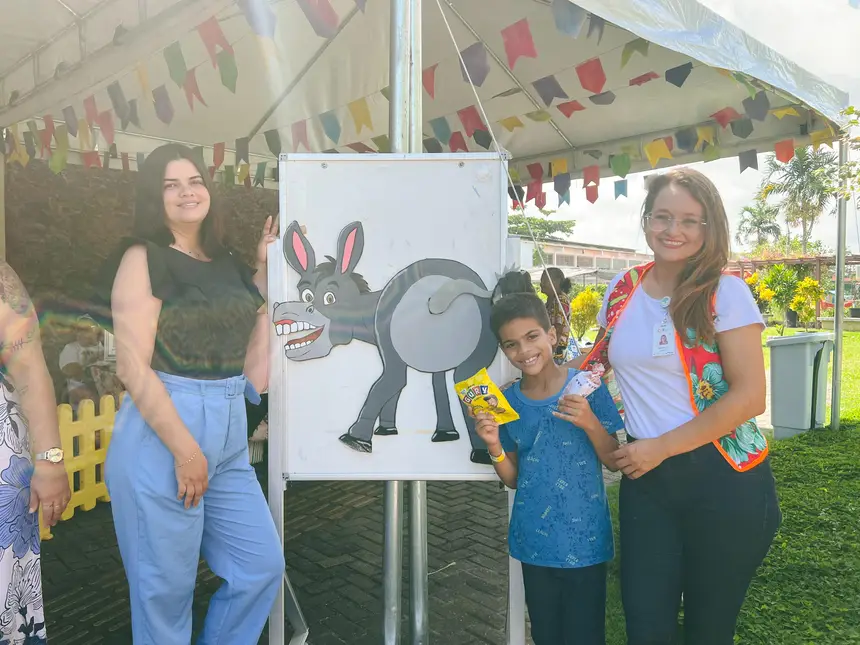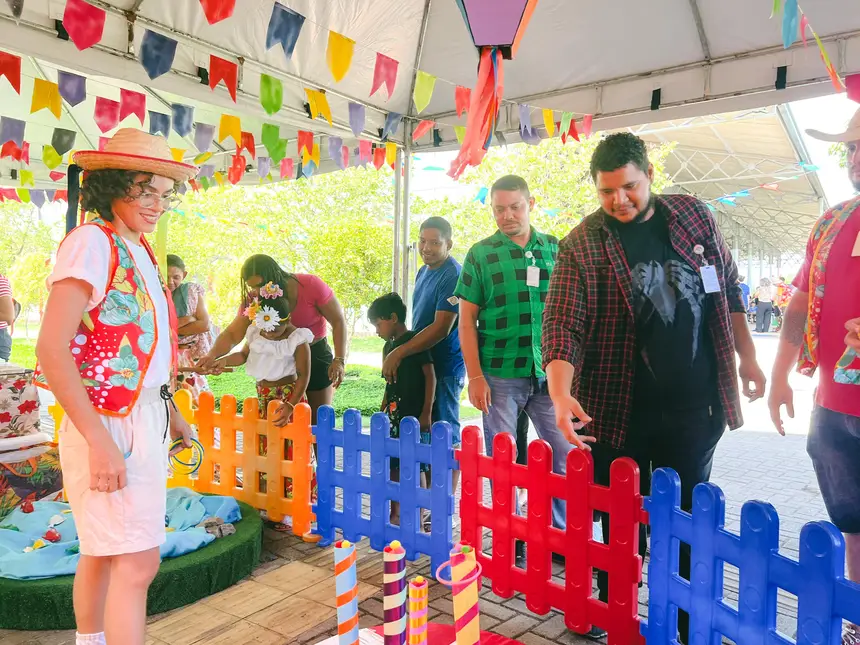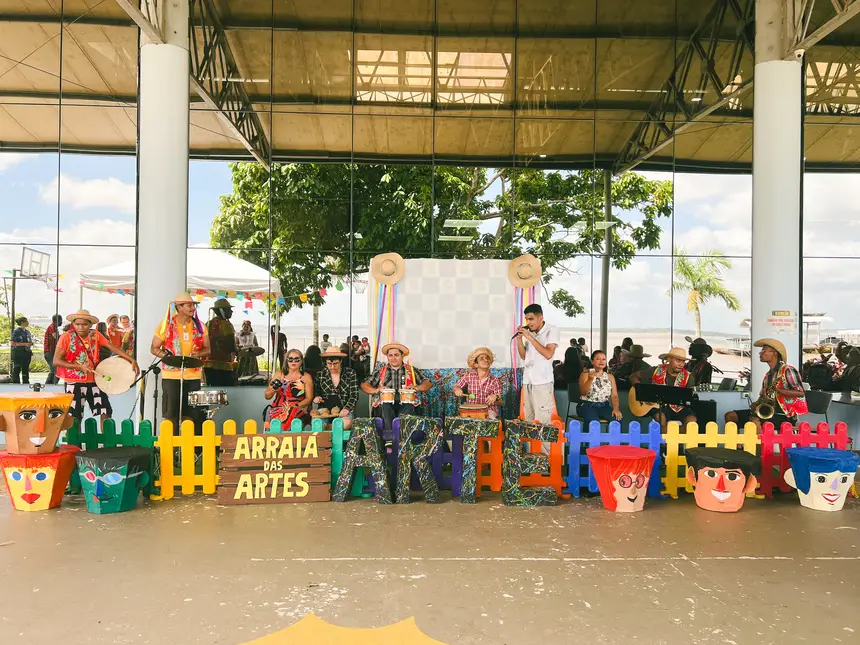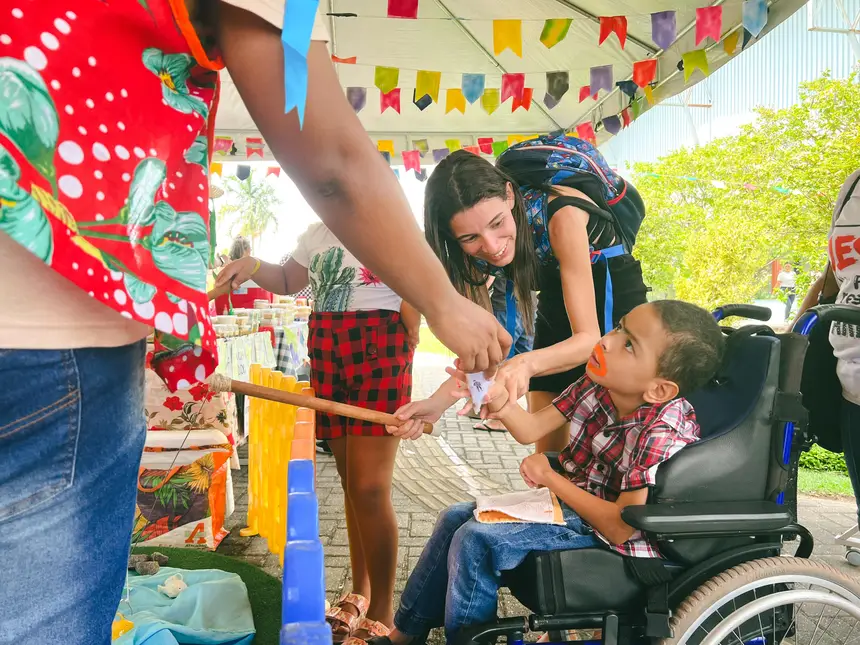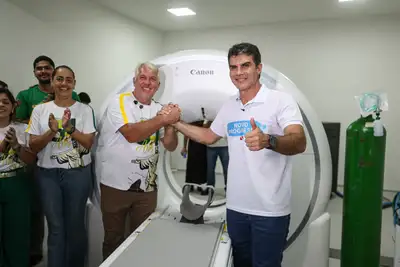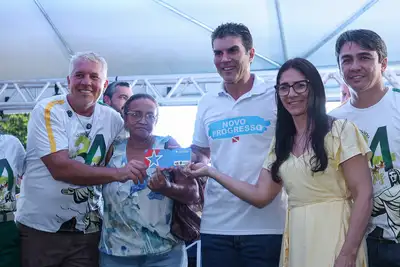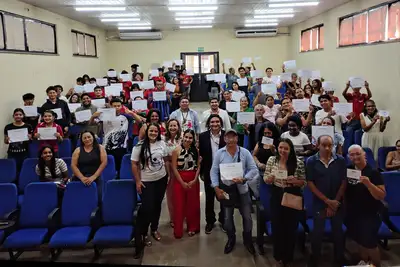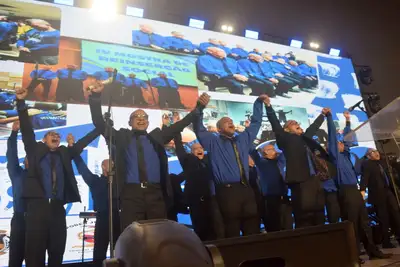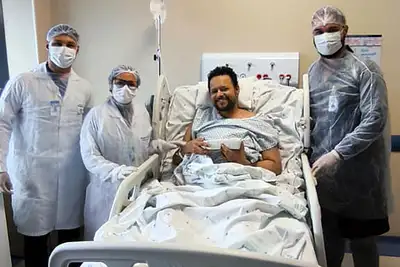June festival celebrates culture, inclusion, and joy during health services at CIIR
A lot of music, dance, games, and integration among users, companions, and professionals were part of the event
The June atmosphere took over the Integrated Center for Inclusion and Rehabilitation (CIIR) in Belém on Wednesday, the 25th, with the realization of the "Arraiá das Artes". The festivity was promoted by the Humanization Working Group (GTH), in partnership with the Art and Culture sector, and brought together users, companions, and collaborators for a day of joy, integration, and appreciation of Pará's popular culture.
Held on the banks of the Guajará Bay, the event was marked by a lot of music, dance, games, and diversity. The program began with a June procession that traversed the CIIR premises, starting from the entrance to the waterfront. Then, the audience watched musical performances that exalted regional rhythms, such as carimbó and cacuriá, in addition to participating in typical games with the distribution of prizes in the "Recriarraiá" space. The closing was by the Quadrilha Chapéu de Palha, formed and presented by the CIIR collaborators themselves.
According to Denise Morais, supervisor of the Art and Culture sector, the event's goal is to strengthen the sense of belonging and cultural identity of the assisted community. Furthermore, the action marks the culmination of the workshops developed with the students of the sector.
"It is a program designed to strengthen bonds and reinforce commitment to humanization through the arts," she explained.
She also highlighted that "the procession, with its colors, music, and traditions, creates a playful and welcoming environment that favors social interaction, strengthens bonds, and breaks attitudinal and emotional barriers."
Those who attended the event approved. Caregiver Kelly Lucena, mother of little Ítalo Ribeiro, 7 years old, highlighted how special the moment was for her son, who has Autism Spectrum Disorder (ASD).
"It is very important for the social interaction of our children. My son has difficulty socializing, and dance helps a lot with that. Besides bringing a bit of our culture, he participated in interactive games and activities that stimulate motor coordination. And the band was wonderful, with an incredible connection with the audience," she stated.
Music and Pará culture as a therapeutic tool
The musical performances were conducted by the Diversom Group, formed by students from the CIIR Music Workshop and coordinated by Professor Messias França, who emphasized the importance of valuing Pará's culture as part of the therapeutic process.
He explains that providing moments like this is always very important to show the audience what is worked on in the classroom. "The experience in the classroom is one thing, but when we present outside, it is an opportunity to face nervousness and shyness. It is the moment when the student stands before the audience, interacts, enchants, and transforms those who are watching." For the professor, this is fundamental for the artistic and personal growth of each of them.
Retiree Sandra Machado, grandmother of Gustavo Machado, 14 years old, who has an intellectual disability and has been participating in the Art and Culture workshops for about a month, shared her joy at seeing her grandson in the procession.
"It has been wonderful. It is the first time he participates in an event like this here at CIIR. He is more communicative, interacting with people. I brought him to see if he would like it, and he loved it. I am very happy and grateful for this moment," she said.
Culture and inclusion throughout the entire June month
The "Arraiá das Artes" was the highlight of a series of activities promoted by CIIR with a June theme. Among the highlights is the Entrepreneurs' Fair, held from June 10 to 12, which brought thematic stalls and handmade products to the Center's hall, encouraging income generation and the protagonism of users and families.
Another significant moment occurred on the last day, June 16, when the Vô com Arte project promoted a carimbó circle and June experience with elderly people institutionalized in a state shelter, strengthening bonds and promoting emotional well-being. At the Autism Spectrum Disorder Care Center (Natea), the June month was celebrated with dance, parades, and cultural activities, involving families and users in a welcoming and affectionate environment.
And it’s not over yet: on the next day, July 2, the "Arraiá das Artes" will also be held at the Specialized Center for Autism Spectrum Disorder (Cetea), ensuring that even more users, companions, and professionals can experience the joy of June festivals in a therapeutic, inclusive, and culturally rich environment.
Structure – CIIR is a reference in Pará for medium and high complexity assistance to people with visual, physical, auditory, and intellectual disabilities. Users can access the Center's services through referrals from health units, welcomed by the Regulation Center of each municipality, which in turn forwards to State Regulation. The request is analyzed according to the user's profile by the State Regulation System (SER).
Service: The Integrated Center for Inclusion and Rehabilitation is an agency of the Government of Pará managed by the National Institute for Social and Human Development (INDSH), in partnership with the State Department of Public Health (Sespa). It operates at Arthur Bernardes Highway, No. 1,000, in Belém. More information: (91) 4042-2157 /58 /59.
Text: Tarcísio Barbosa (Ascom CIIR)




